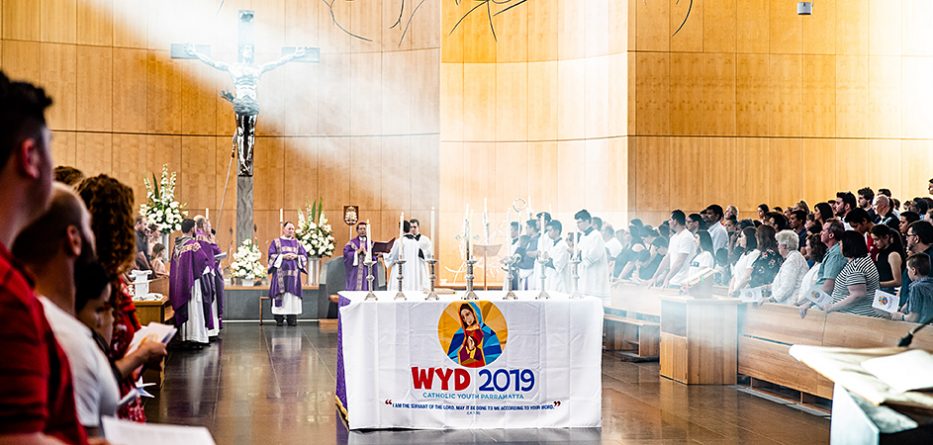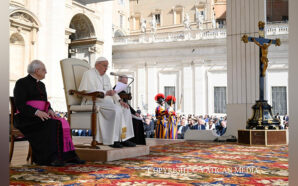Plenary Council Participation and Reception: Synodality and Discerning the Sensus Fidelium
By Reverend Associate Professor Ormond Rush
Earlier, I mentioned the Holy Spirit. Vatican II gave great store to the enlightenment and guidance of the Holy Spirit for discerning and determining God’s will, God’s plan. What is that plan for Australia, as we move forward into the future, with all the multiple challenges coming from forces like the Royal Commission, from the tsunami of secularism, etc. Vatican II highlighted to an unprecedented degree the way the Holy Spirit guides the church in troubling times. Lumen Gentium 12 is a key passage. It is one of Pope Francis’ favourite quotes from Vatican II. It refers to the sensus fidelium, or more specifically “the supernatural sense of the faith of the whole people.” In an interview soon after his election in March 2013, Pope Francis alluded to the significance of the fact that Chapter 2 in Lumen Gentium on the whole People of God (the church as a community of all the baptised in the church), comes before its chapter on the hierarchy:
The image of the Church I like is that of the holy, faithful people of God. This is the definition I often use, which is the image of Lumen Gentium, no. 12. Belonging to a people has a strong theological value… The people themselves are the subject. And the Church is the people of God on the journey through history, with joys and sorrows. Sentire cum Ecclesia [to think and to feel with the Church], therefore, is my way of being a part of this people. And all the faithful, considered as a whole, are infallible in matters of beliefs, and the people display this infallibilitas in credendo, this infallibility in believing, through a supernatural sense of the faith of all the people walking together. This is what I understand today as the “thinking with the Church” of which St Ignatius speaks. When the dialogue among the people and the bishops and the Pope goes down this road and is genuine, then it is assisted by the Holy Spirit. So this thinking with the Church does not concern theologians only… And, of course, we must be very careful not to think that this infallibilitas of all the faithful I am talking about in the light of Vatican II is a form of populism. No, it is the experience of the “holy mother the hierarchical Church”, as St Ignatius called it, the Church as the people of God, pastors and people together. The Church is the totality of the people of God. [3]
This passage not only highlights the importance of the sensus fidelium, but also the fact that divine revelation is given, not just to the hierarchy, but to the whole church. Furthermore, the hierarchy (bishops, priests, deacons) are to be understood as located within the People of God, which they serve, and not an authority “over against” the People of God.
Herein lies Pope Francis’ understanding of “a synodal church”, as programmatically expressed in his now famous address on synodality on October 17, 2015, referring to a favourite pre-Vatican II way of conceiving the church as “a pyramid”, with the pope and the bishops at the top, and the rest of the baptised at the bottom:
“Synodality is a constitutive element of the Church. In this Church, as in an inverted pyramid, the top is located beneath the base.” “A synodal Church,” he says, “is a Church which listens, which realises that listening ‘is more than simply hearing’. It is a mutual listening in which everyone has something to learn. The faithful people, the college of bishops, the Bishop of Rome: all listening to each other, and all listening to the Holy Spirit, the ‘Spirit of truth’, in order to know what [the Spirit] ‘says to the Churches’.” [4]
For Pope Francis, “synodality” is more than just an element of a papal primacy and episcopal collegiality exercised more collaboratively; he speaks of “episcopal collegiality within an entirely synodal church.” And to emphasise the difference, he immediately repeats his distinction between the “two different phrases: ‘episcopal collegiality’ and an ‘entirely synodal church’.” [5] As Archbishop Mark Coleridge captured it, after listening to that October 17 speech: synodality now means “not some of the bishops some of the time but all of the Church all of the time.” [6] Since the pope is using “synodality” as a neat catch-all phrase for how Vatican II envisioned the church ad intra (with significant implications for how it envisioned the church ad extra), and in a way that goes beyond what the council explicitly stated regarding synods, a new theology of “synodality” within the Catholic Church needs to be more fully developed. And the current canon law’s reference to Particular Councils (provincial and plenary councils), should be interpreted in the light of that new theology of synodality.
Part three will be published tomorrow.
To read part one, click here.
Fr Ormond Rush is a priest of the Diocese of Townsville, and lectures in theology at the Brisbane campus of Australian Catholic University (ACU).
This paper originally appeared in Edition 27 of the Plenary Post from the Plenary Council 2020. Reproduced with permission.
[3] Pope Francis, My Door Is Always Open. Interview with Antonio Spadaro, 49–50.
[4] Ibid. The pope is quoting here his own document Evangelii Gaudium, 171, along with Jn 14:17; Rev 2:7. For Evangelii Gaudium, see http://w2.vatican.va/content/francesco/en/apost_exhortations/documents/papa-francesco_esortazione-ap_20131124_evangelii-gaudium.html.
[5] 17 October 2015 address.
[6] Archbishop Mark Coleridge, “From Wandering to Journeying: Thoughts on a Synodal Church,” Australasian Catholic Record 93, no. 3 (July 2016): 340–50, at 348.








